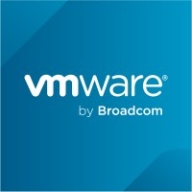

Trend Vision One and VMware NSX compete in the cybersecurity and network security category. Based on the comparison, Trend Vision One has a stronger focus on comprehensive threat detection with a broader endpoint and network coverage, while VMware NSX is noted for its robust network security and detailed application-level policy enforcement.
Features: Trend Vision One offers enhanced threat detection with behavior analytics, cross-layered architecture, and comprehensive endpoint and network coverage. VMware NSX provides strong network security with microsegmentation, robust scalability, and detailed policy enforcement at the application level.
Room for Improvement: VMware NSX users find the setup and integration with legacy systems complex, request better reporting, and face challenges transitioning from NSX-V to NSX-T. Trend Vision One users struggle with the complex UI, false positives, and need improved report generation, automation, and third-party integrations.
Ease of Deployment and Customer Service: VMware NSX is scalable across hybrid and on-premises environments but requires technical expertise for deployment. Trend Vision One offers straightforward deployment with extensive cloud integration. VMware NSX receives mixed customer service reviews, whereas Trend Vision One is praised for its proactive technical support.
Pricing and ROI: VMware NSX is costly, yet large enterprises find it cost-effective due to comprehensive features and CapEx savings. Trend Vision One's pricing reflects its extensive features, deemed expensive but justified by its effective security management. Both solutions provide significant returns through improved security and reduced management overhead.
Our company went through a ransomware event, and if Trend Vision One had not stopped it, that could've closed the company's doors.
Trend Vision One has improved our ROI by 30 percent.
Thankfully, we also had cyber security insurance, and the insurance covered the incidents because, through Trend Micro and the implementation of the solution, along with the data it provided, we were able to demonstrate what had happened.
It's not just about high-level support with the chatbot; rather, when an issue occurs, we have the experts on-site and ready to respond swiftly, which is crucial.
Trend Micro supported us throughout the transition from on-prem servers or other vendors, providing top-notch service at all times.
Support responds quickly, and together we’ve been able to solve all challenges in our day-to-day operations.
They were always helpful.
They are quick and understand things easily, so the support is aligned very effectively.
Our technicians have a good support experience from the company.
I’d give scalability a 10 because nearly everything is integrated.
Our growth over the past three years has never caused performance or expansion issues.
I don't think I've encountered any issues with scalability; we're growing steadily, and I believe Trend Vision One can keep up with our demand.
There is a high level of satisfaction with its ability to scale.
Trend Vision One works exactly as intended and has never hindered our operations, feeling more a collaborator than a roadblock.
The stability is very high.
Stability is critically important for us with Trend Vision One; it is very stable, providing continuous 24/7 support.
The product performs at 99% efficiency without any showstoppers or significant issues.
For stability, I would rate VMware NSX as a nine out of ten.
Trend Vision One does not initially disclose to customers that they need to purchase additional licenses and pay more for integrations.
Consolidating case details into a single, more intuitive view would streamline investigations and save time.
The deployment can be complex, and we'd like an easier process, especially when integrating with on-prem and cloud environments.
The initial configuration and integration within our existing environment were not easy.
The pricing for the product is another area for improvement as I'm not satisfied nowadays.
The licensing model is expensive and could be more flexible, especially after Broadcom bought VMware.
I find the credit model non-transparent—you can't always tell how many licenses apply to which product.
I have seen others that are double or triple the price.
Customers who cannot afford CrowdStrike's pricing can easily opt for Trend Vision One.
The cost of VMware NSX is considered high.
VMware NSX is a little higher in price compared to the competition.
There is room for improvement in terms of pricing.
The most important features of Vision One include visibility, AI integration, attack pattern analysis, predictive analytics, and centralized visibility and management across protection layers.
The most critical feature of Vision One is that it gives us a single console for threat management.
Its ability to identify unmonitored endpoints and perform log inspection, which establishes operational baselines and detects anomalies, proves invaluable for threat identification.
Micro-segmentation enhances security and provides more secure data in your data center.
The most powerful feature of VMware NSX is the micro-segmentation that allows us to separate the different protocols our application works with.
I value the ability to dynamically configure our network on the fly using VMware NSX.
| Product | Market Share (%) |
|---|---|
| Trend Vision One | 1.9% |
| VMware NSX | 1.1% |
| Other | 97.0% |


| Company Size | Count |
|---|---|
| Small Business | 41 |
| Midsize Enterprise | 11 |
| Large Enterprise | 34 |
| Company Size | Count |
|---|---|
| Small Business | 33 |
| Midsize Enterprise | 23 |
| Large Enterprise | 69 |
Trend Vision One offers comprehensive protection for endpoints, networks, and email with centralized visibility. It is valued for its attack surface management, real-time threat detection, integrated management, ease of deployment, and user-friendly interface.
Trend Vision One provides a sophisticated security platform combining endpoint, network, and email protection with features like virtual patching and advanced AI capabilities. Its centralized management and integration with platforms like Office 365 and Azure make it an attractive option for organizations needing streamlined workflows and efficient risk management. While it boasts robust integrations and ease of use, enhancements are needed in reporting, tool integration, and reducing false positives. Users call for better support infrastructure, faster response times, and improved threat intelligence capabilities. Despite some complexity, its AI and ML features significantly enhance threat detection and response.
What Features Define Trend Vision One?
What Benefits Should Users Look For?
Trend Vision One is implemented in industries that require endpoint protection, ransomware defense, and incident response, being flexible for both on-premises and cloud environments. It is used to monitor servers, networks, and endpoints, providing features like email protection, behavioral detection, and threat visibility. Organizations benefit from AI and ML, improving their security posture and response capabilities.
VMware NSX is a comprehensive tool for network virtualization and security, offering advanced features like micro-segmentation and multi-cloud networking to enhance scalability and management efficiency within enterprises.
VMware NSX revolutionizes enterprise networking by integrating security and scalability into one streamlined platform. With capabilities like dynamic policy updates and automation, it simplifies complex configurations and provides robust API integration. Its support for Layer 4 and 7 load balancing, along with its seamless integration in multi-cloud environments, makes it a preferred choice among companies. Although deployment speed and management console features require refinement, NSX is an effective solution for private cloud and hybrid environments, enabling centralized orchestration and management of complex networks.
What are the key features of VMware NSX?
What benefits and ROI should users consider?
In the tech industry, VMware NSX is instrumental in managing private and hybrid cloud environments, allowing companies to replace traditional networking with software-defined networks. In finance, it helps secure transactional data through micro-segmentation. Healthcare organizations leverage its flexibility for managing sensitive patient information securely and integrating cloud services.
We monitor all Network Detection and Response (NDR) reviews to prevent fraudulent reviews and keep review quality high. We do not post reviews by company employees or direct competitors. We validate each review for authenticity via cross-reference with LinkedIn, and personal follow-up with the reviewer when necessary.